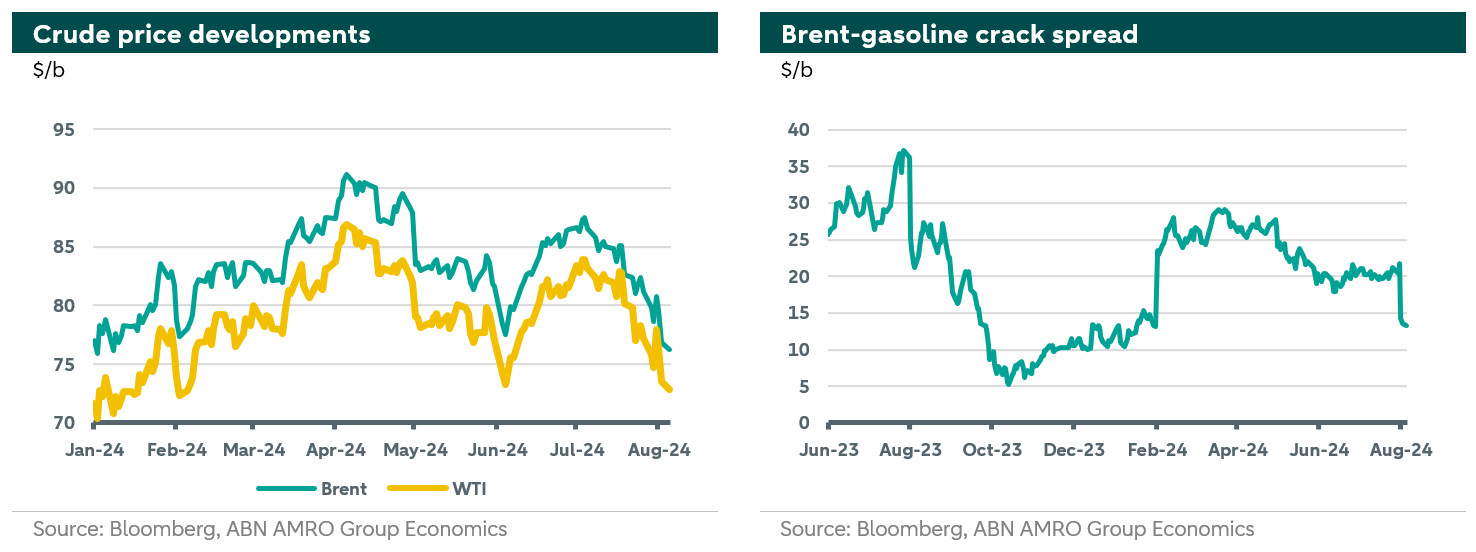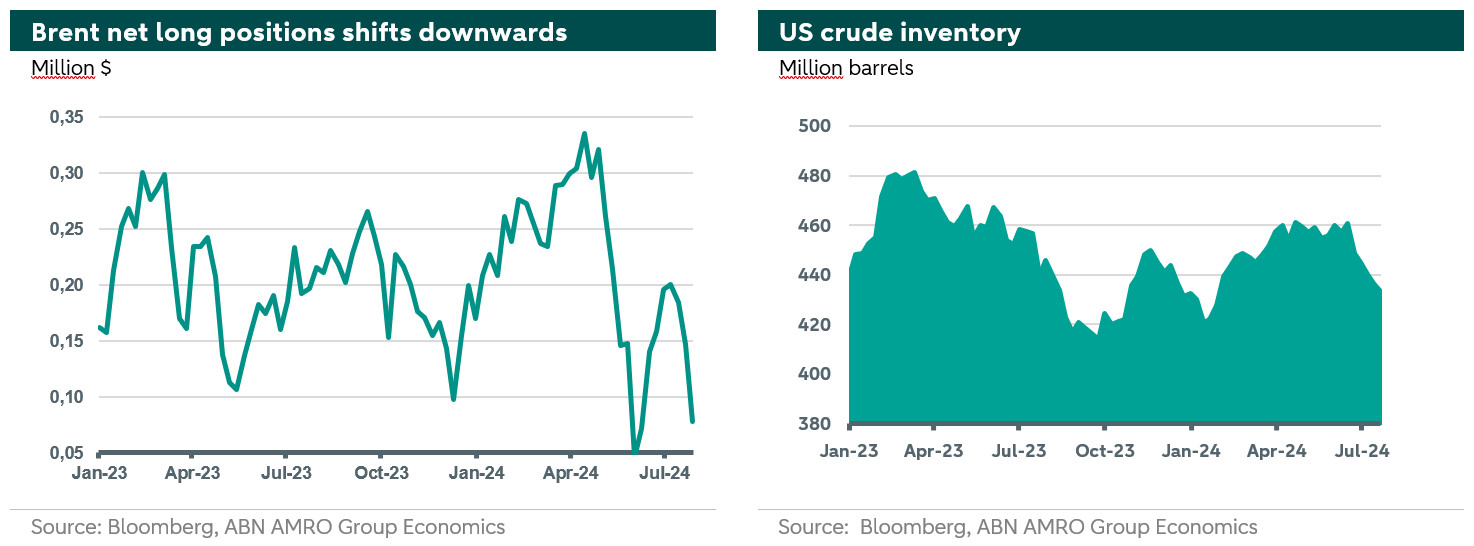Oil market update - Gloomy demand outlook dominates geopolitical uncertainty

OPEC+ retains its plan to revive production starting October. Chinese lower than expected demand in the second half of 2024, fears of recession in the US along with higher supply by Non-OPEC+ producers have put downward pressures on prices. However, the geopolitical premium following the resurgence of tensions in the Middle-East is keeping prices in check. Our outlook for Brent is to average 85 $/b in Q3 and Q4 as the economic recovery in main markets takes more time to gain momentum.
Brent prices averaged 83.9 $/b in July after the short lived recovery in June reversed as the market priced-in several development such as the potential revive of production by OPEC+ in October, the lower expected demand from China for the second half of 2024, and the higher supply by non-OPEC+ producers. In addition, the emerging fears of a recession in the US increased the bearish sentiment in the market, which have been dominating any upward factors such as the resurgence of geopolitical tensions in the Middle-East. Brent prices are currently trading around 76 $/b.

Oil market drivers
From the supply side, as communicated in our last update (see here), OPEC+ announced a phasing out of their voluntary cuts over one year starting in October 2024. The cartel emphasized that the increase in production is subject to market conditions. However, in its most recent monitoring meeting, the group reiterated its intention to revive production in the coming quarter with potential revision based on market developments, leaving the market uncertainty active with a last chance of potential policy change in September. Meanwhile, supply from non-OPEC+ countries, especially from the US and Guyana has been rising, adding to the downward pressure on prices.
Main indicators such as Brent-gasoline crack spreads witnessed a decrease over July and early August reflecting the weakness of oil product cracks across the barrel, which in turn indicate an upcoming bearish impact on prices (see right hand chart above).
Regarding main inventories, and following new data issued by American authorities, US crude inventories have been decreasing (see right hand side chart below) citing a high demand on exports as a main driver.

From the demand side, there are no signs of strong recovery from main markets yet. Data on crude demand from China in the first half of the year was lower than expected. Moreover, Chinese slower demand is expected to extend to the second half of 2024. Similarly in the US, the slowdown in vacancies growth and the increase in unemployment rate to 4.3% have increased fears of a recession for the world largest economy especially as the Fed keeps rates high, which also add to the increase in the bearish sentiments for the oil as can be seen in the left hand side chart above.
Finally, the resurgence of tensions between Iran and Israel have put an upward pressure on oil markets as the geopolitical premium increase following the assassination of Hamas’s political leader in the Iranian capital and a high military official of Hezbollah in Lebanon by Israel. Meanwhile, the Iranian authorities announced that revenge is unavoidable increasing the fears of supply disruptions in case of further escalation to a full scale war (see our previous note here for geopolitical scenarios in the Middle-East).
Outlook
We think that the geopolitical tensions in the Middle-East will remain for some time with a low probability for a full scale war scenario. If these tensions subdued in the coming days/weeks, we think that OPEC+ will revisit its plans to revive production in September to maintain prices above 80 $/b. At the same time, we think that the US recession risk should stay contained, despite market worries. We further think that a move by the Fed before the September FOMC meeting is unlikely while a 50bp cut at the September meeting has become more likely (see more here). Accordingly, we retain our outlook for Brent for the third quarter of 2024 to average 85 $/b. However, we revisit our end of year price downward from 90 to 85 $/b as the expected recovery in economic activity in main markets moves towards 2025.
